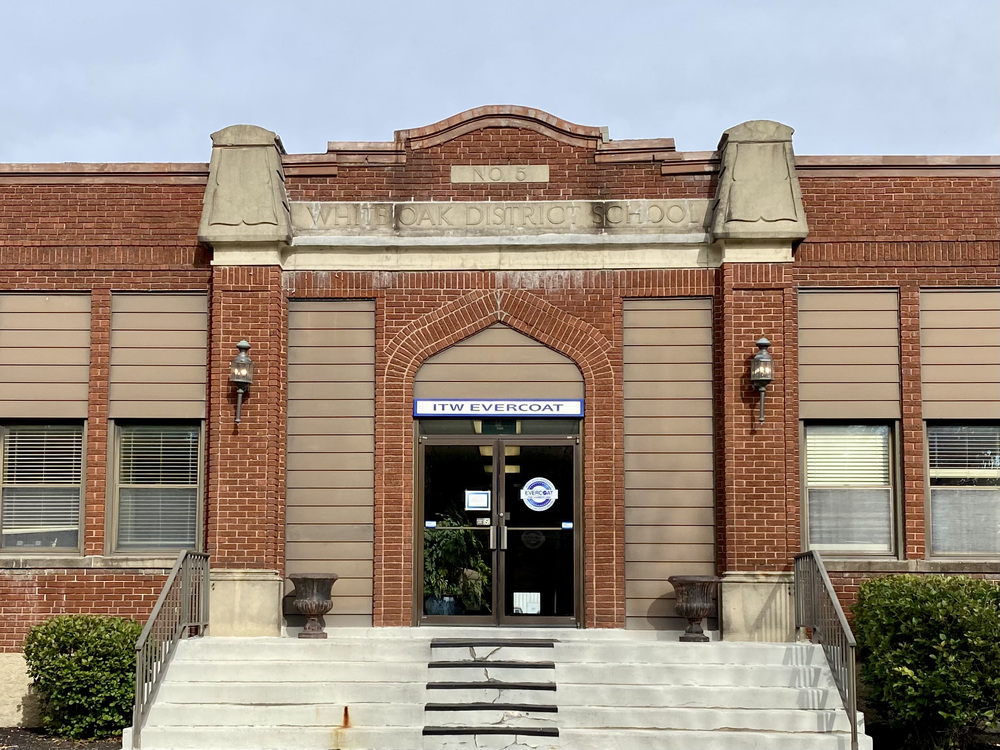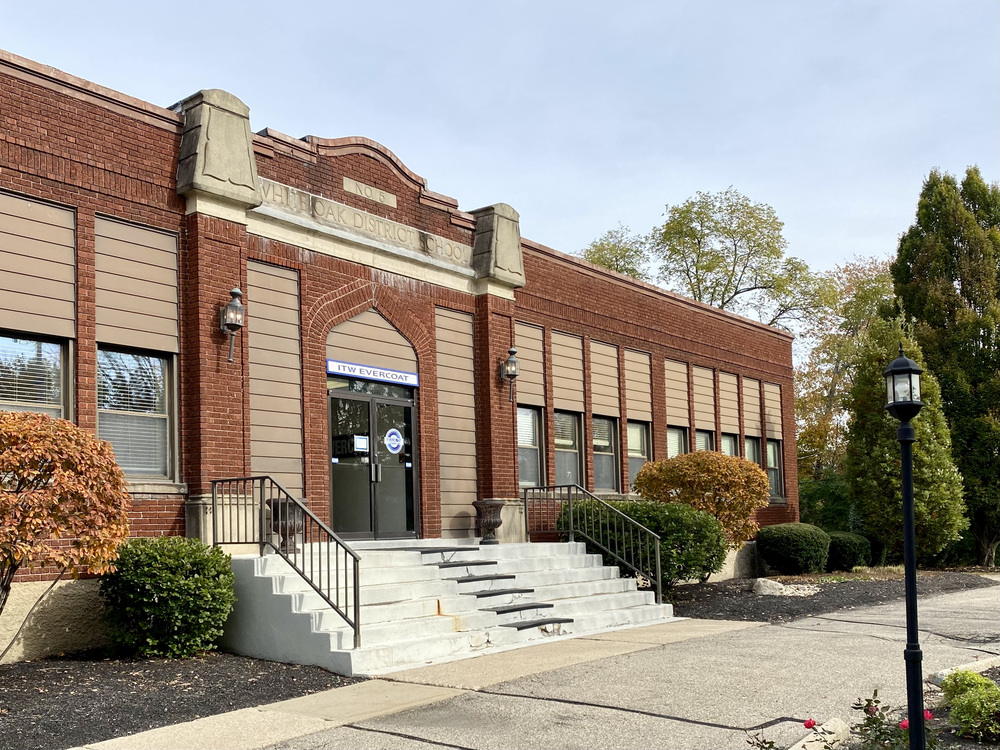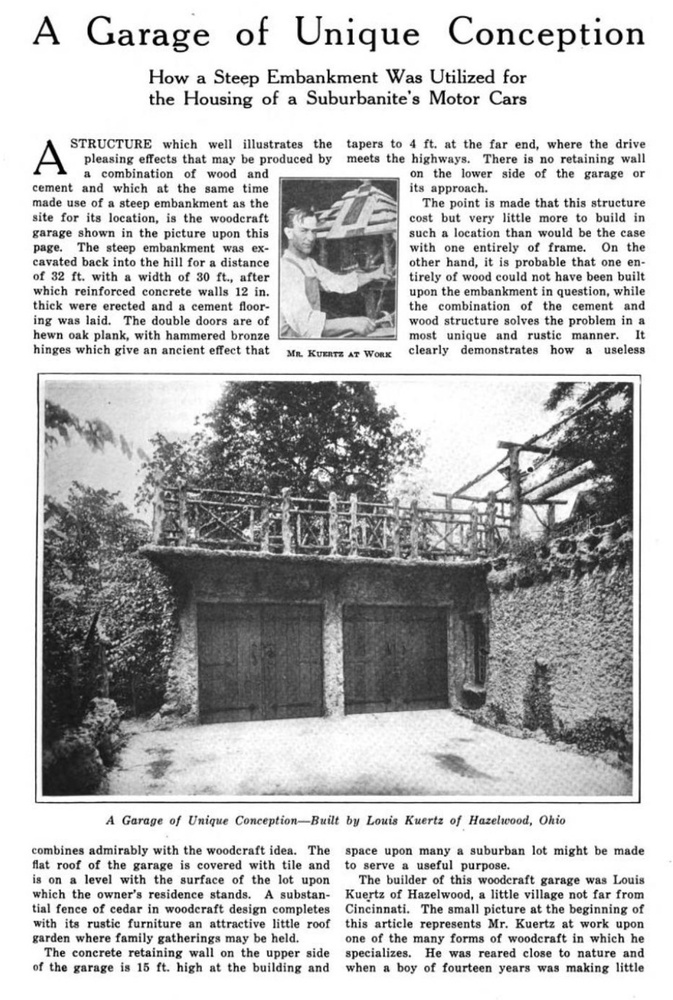White Oak School
Focus of successful pro-integration protests in 1949

The former White Oak School building lies on the border between mostly-white sections of Blue Ash and the historically Black area called Hazelwood. The White Oak School was traditionally integrated, but white residents of Blue Ash attempted to gerrymander school district boundaries to create segregation, leading to a difficult struggle.
The White Oak School building – now a warehouse – is a brick building, built in 1924 to replace an earlier wooden structure. The school was attended by both Black students from Hazelwood and white students from Deerfield Road.
Classes at White Oak only went up to the eighth grade, so a student who wanted a high school diploma would have to move to a different school, often at Lockland. In 1935, the Lockland school decided to stop accepting students from Hazelwood, stating that those students should instead attend Sycamore Township Union High School. But when Black students from Hazelwood attempted to enroll at Sycamore, they were refused admittance.
One of the students’ mothers, Sophronia Henry Marshall, hired Theodore Berry as her attorney and sued the Sycamore Township school. Officials at Sycamore gave in, and the Black students were able to enroll after all, setting an important precedent.
In 1949, school officials decided to consolidate six rural schools, including White Oak, into a single district, called the Sycamore Local School District. School officials began planning to transfer white students out of Hazelwood, sending them to Sharonville School instead, leaving White Oak as an all-Black institution.
Michael Washington has written an outstanding article for Ohio Valley History magazine, titled “Civic Organizing in the Hazelwood Subdivision.” Washington writes,
“Hazelwood residents were proud that their children had always attended an integrated school and they received no rationale from the Sycamore Board of Education to justify such a draconian change. From the students’ perspective the sudden imposition of racial segregation fractured relationships with their white classmates.”
In the early fall of 1949, members of an African American civic organization called the Brothers Civic Association of Hazelwood began a petition drive to keep the White Oak School integrated. They collected 260 signatures and solicited the help of the NAACP. At a school board meeting that November, school officials announced that the white students would not be transferred after all, and White Oak school would remain integrated.
Michael Washington states, “Hence, the Sycamore Local Schools became the first school system in Hamilton County to intentionally integrate a newly consolidated school district from kindergarten through the twelfth grade.”
One other thing about the White Oak School: for many years, the most visible landmark in this area was an unusual, vaguely oriental-looking bell tower in front of the school. The tower was built in 1929. It was 50 feet tall, constructed of stucco and stone applied to a metal frame. It housed an 1875 school bell, and it also served as a well house.
The bell tower was built by local resident Louis Kuertz. Kuertz was in this area by 1910. He worked as a carpenter, landscaper, and artist. He built and sold fanciful birdhouses. He built an unusual garage, decorated with rustic wood railings, which was shown in The Building Age magazine in 1915. And he built at least two fantastical and picturesque houses locally called “the gingerbread houses,” one of which was still standing in 1992.
Louis Kuertz was a visionary man. So it is distressing to report that he was also one of the leaders of a local armed militia called the Sixteen-Mile-Stand Horse Rangers. In 1911, an argument broke out between two Black men on a Hazelwood street, and one of them fired a shotgun, injuring no one. In response, the Sixteen Mile Rangers, led by Kuertz, vowed to “drive objectionable residents of Hazelwood … from that locality.” Unfortunately, there seems to be no record of what specific actions the Rangers took in Hazelwood after that.
Images


